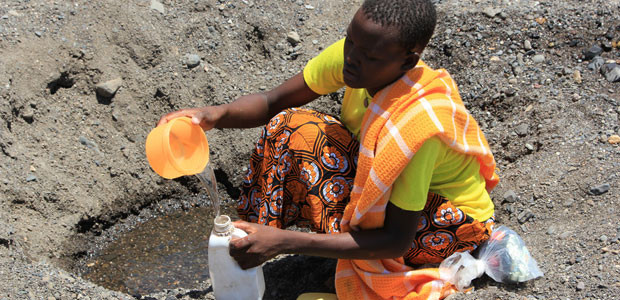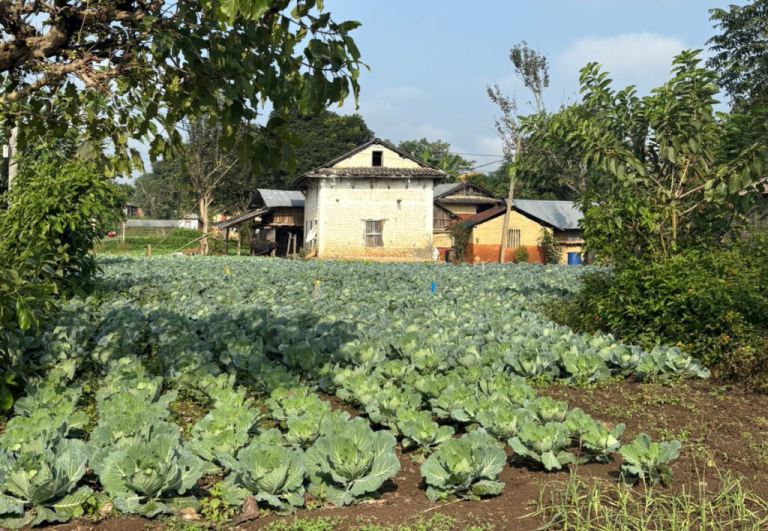“Climate consists of so many things to us,” says Ibrahim Shone, a pastoralist in Isiolo County in Northern Kenya. “It’s not only weather, it’s also about how we prepare for droughts and diseases, and find enough grass for our animals. These things change with the seasons.”
But Northern Kenya is experiencing one of the worst droughts in living memory. In the Turkana region more than 1 million people need food aid. The expected long rains are likely to be below average, which is not good news for struggling pastoralists.
A drought can have devastating effect on a family, forcing them to sell their livestock to avoid losses due to disease, often at half the price they could normally get in better times. Such droughts are only likely to become more common and severe with the effects of climate change.
The last drought in the Turkana region was only a few years ago in 2011. An initiative dubbed Kenya for Kenyans collected over Kshs. 500 million (about US$6 million) to save lives and restore the dignity of pastoralists threatened by death due to drought.
But three years on, the government and donor agencies are back in Turkana again donating money and food to help save lives. For how long will these communities be dependent on aid?
New hope
A project that gives community members a voice and aims to build their resilience to the effects of climate change could help. First implemented as a pilot project in Isiolo County between 2009-2013, it is now being replicated in other areas including Kitui, Garissa, Makueni and Wajir counties.
The project is driven by local community decisions on how financing from a County Adaptation Fund should be best spent. Community members draw on funding by submitting their ideas to a Ward-level Adaptation Planning Committee. The committee will write proposals based on the community’s suggestions, with the support of project staff and technical advisors, and if the proposed project satisfies the criteria of the county adaptation planning committee, it’s funded.
The fund has helped community members build their resilience to climate change by constructing and maintain sand dams, which trap rainwater and provide clean and reliable source of water during droughts. It has paid for the renovation of a veterinary laboratory and the rehabilitation and fencing of water pans — wet season water sources.
“Isiolo County Adaptation Fund projects are unique in that they are implemented by very transparent and accountable community derived committees,” says one community member. “The challenges pulling down a community’s resilience to frequent, severe drought were identified and the interventions to counter them suggested by the community.”
The fund has also supported training of resource management committees and rangeland users’ associations. These groups manage and regulate the use of pastures and water sources, whilst strengthening traditional grazing regulations that governed the use of these resources in wet and dry seasons. These traditional systems were weakened by successive government regimes that were unsupportive to the pastoral economy and way of managing resources.
In one important intervention, the adaptation fund led to the closure of a water pan that had been built in the wrong place — an area reserved for grazing in times of drought. The water pan provided access to this area during the wet season, and this depleted pastures reserved for the dry.
Prior to its closure, consultations were carried out with neighbouring communities, and relevant line ministries to devise an environmentally friendly approach that ensured water is not retained in the pan during the rainy seasons.
The project also brings different pastoralist communities together for consultations that aim to find holistic solution to the problems they face.
Clearly, the benefits of building community resilience to adapt to climate change outweigh the aid/handouts given out during drought season. The project has enabled community members adapt the necessary “shock absorbers” to deal with the seasonal changes brought about by climate change.
Source link : View Article
Author
-

Jane Kiiru serves as the Communications Officer for the Adaptation Consortium, where she plays a pivotal role in promoting climate adaptation initiatives and enhancing public awareness of the consortium's work. With a background in environmental communications and advocacy, Jane is dedicated to fostering collaboration among stakeholders to build resilient communities. Their initiatives emphasize community engagement and local solutions to build resilience against climate change, particularly in vulnerable regions like Kenya.



